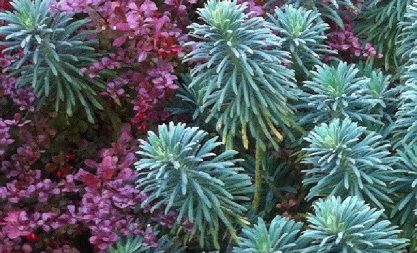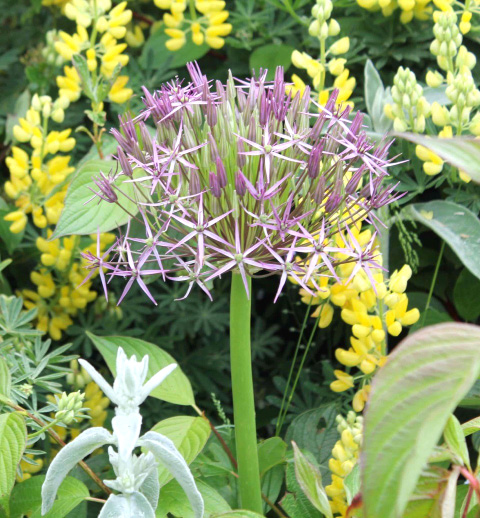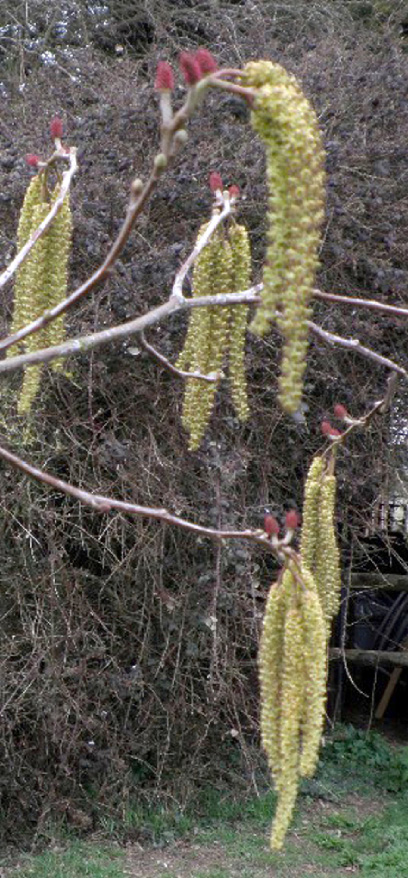Here we go again – out with the old and in with the new and all the happy resolutions are sitting there looking shiny and achievable. Hopes are high and all is ‘plans and perusing’. I’ve been looking out of the window and have to confess that my own resolutions are a bit tedious: 1. finish projects before starting others, 2. label seeds and cuttings, and 3. don’t make piles of things. I’m hoping that you don’t have my bad habits, so I’ve chosen a few more that might help to make a difference, not just to the look of the garden itself, but also to the experience of being in the garden. Here goes:
1. Plant a tree
Anyone with a garden will have room for a tree. Not a giant Redwood, or anything too close to the house that will clog the drains and lift the foundations, but something that will give height and interest all through the year. There are plenty of beautiful small trees for smaller gardens, or even for within borders. I’m a bit mean when it comes to choosing trees and shrubs, especially if they’re going to be focal points. After all, if they’ve been invited to be the star attraction, they ought to provide at least two seasons of interest. So look out for trees that will have good foliage, blossom, fruit and a handsome overall shape. Too much to ask? I don’t think so.
2. Add more structure to your borders
This is a great time of the year for focusing critically on the borders, without the distraction of the flowers and foliage. If it’s all looking dismal and bare, think about adding some plants for winter interest. These can be evergreen, or have interesting bark, an elegant form, or an anchoring feature of some kind. Try to make sure that plants that come into their own during the winter either fade into the background once they’ve done their thing, become a foil for other plants, or, best of all, will bring another point of seasonal interest later in the year.
3. Learn how to prune
If you’re adding structure, you will find that no matter how well behaved the plant is, unless it dies or is made of plastic, it will need pruning at some point. Knowing when to prune each plant and by how much is a subject that fills many books (containing impenetrable diagrams that bear no resemblance to your plants). So, in a couple of sentences: prune evergreens during the spring and summer when all danger of frost is past. Prune early-flowering deciduous shrubs after they’ve flowered and late-flowering shrubs (Buddleia etc), in the early spring. For the health of the plant, cut out dead, damaged and diseased wood first and then aim for a pleasing goblet shape. Branches shouldn’t cross or grow inwards, as a more open structure allows air to circulate. Stand back often and look at the overall shape, as if you’re a hairdresser, but try not to ‘hedge’ about trimming little pieces off, as this can make the situation worse. Got all that? Fortunately GBH to plants does not carry a prison sentence – yet.
4. Catch problems early
If you make a habit of going into the garden on a daily basis you stand a better chance of catching the first greenfly as it alights and the first slug that dares to slide into view. If possible, incorporate it into your daily routine and take a companion – or, better, a cup of tea or a glass of something as you walk round. You’ll soon start spotting a few weeds and the odd pesky. Pull them up or pick them off as you go and you might just stay on top of them…
5. Grow more edibles
Some crops might not work, your vegetables might not look as perfect as they do in the shops, but they will taste better and you’ll have the satisfaction of having grown them yourself. That first year will be a great adventure – and it will take about that long for all the pests to find you – after that, growing your own can become more of a battle. If you have been growing vegetables for a while and have been beset by pests/diseases/soil problems, work out which crops have suffered and then just grow a few of the easy-going ones that won’t need too much TLC: salads, beans, tomatoes and courgettes should provide bumper harvests of summer crops. Add in a few leeks and spinach or kale and the winter will be covered without much fuss, too.
Apparently we should only make one resolution each year and then break it down into an achievable action plan. So I’d say going into the garden more often would be the one to choose. You might start off just catching a few of the problems early, but, strangely, the more you go out in it, the more you find yourself doing a few little jobs, and before you know it, there’s a list of plans and high hopes for their completion. Let’s get out there.
Five Small Trees to Plant This Year
Acer – there’s an Acer to suit every garden and all of them have fantastic foliage in the autumn. Some have good spring foliage, too, and a few, like Acer palmatum ‘Sango-kaku’ and Acer griseum have interesting winter bark. Plant Acers in a sheltered spot.
Amelanchier – this is another good all-rounder with coppery young foliage, autumn tints and blossom in April. If you grow it as a multi-stem, rather than with just one trunk, it will stay the size of an elegant shrub, or ‘treelet’.
Sorbus aucuparia – better known as Rowan, or Mountain Ash, the native species will give you blossom, autumn foliage and red berries, while some of the cultivars have berries in orange, pink or white.
Crabapple – hard to beat for three seasons of interest, blossom, fruit and autumn foliage.
Cornus kousa – this is a lovely tree to grow as a focal point, either in the border among other plants or on its own. It has long-lasting large bracts in summer.
Five Good Structural Plants
Box – this is excellent for adding formality and evergreen interest. Create low hedges, topiary shapes and focal points.
Euphorbia ‘Wulfenii’ – is an architectural plant with handsome, grey/green foliage in winter and long-lasting lime green bracts in spring.
Miscanthus sinensis – a tall grass with attractive seedheads that will persist all through the winter. Grasses are a good alternative to ‘blobby’ shrubs and bring movement to a border.
Osmanthus – a small leaved evergreen with tiny scented flowers in spring. It can be trimmed to a neat shape to make a dark backdrop for other plants.
Cornus alba ‘Elegantissima’ – this dogwood has pretty, variegated foliage, good autumn colour and dark red stems on the young growth.
TEST
Euphorbia ‘Wulfenii’ – is an architectural plant with handsome, grey/green foliage in winter and long-lasting lime green bracts in spring
TEST
Alliums add interest to borders
TEST
Beautiful bark
TEST
Hanging catkins
- words: Jo Arnell
You may also like
Go with the Flow
Sue Whigham shares some valuable new-to-gardening advice I’m sure that by now we should be used to the rain but I’m not entirely sure that we are. We had a dry, sunny day the other day and how everybody’s mood...
Farm Fables
Jane Howard gets to the bottom of why so many ponds have disappeared across the High Weald I have a new passion, almost an obsession, it’s about ponds. And there’s a distinct possibility I might become a bit of a...
Hedge Issues
Sue Whigham takes a meander along nature’s verdant and vital corridors Recently the BBC’s Today programme carried a feature about England’s hedgerows which created a lot of interest among listeners. On the strength of that, Martha Kearney interviewed one of...














